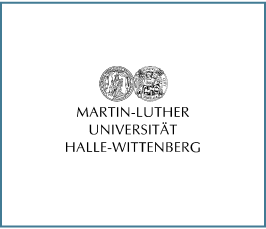Quantum physics in all four spatio-temporal dimensions
Colloquium
- Datum: 28.06.2018
- Uhrzeit: 17:15
- Vortragende(r): Prof. Alfred Leitenstorfer
- Universität Konstanz, Fachbereich Physik
- Ort: Martin-Luther-Universität Halle-Wittenberg, Institut für Physik, Theodor-Lieser-Str. 9, 06120 Halle
- Raum: Gustav-Mie-Hörsaal

A selection of experiments exploring a new regime of quantum physics
will be presented, where extreme confinement in both time and space
gives rise to new phenomena. We currently work on three different types
of studies with increasingly fundamental character. In an example for
the first area, bulk GaAs is biased nondestructively up to 12 MV/cm with
intense mid-infrared transients. We monitor the subcycle change in
interband optical properties. Model calculations confirm the onset of
Wannier-Stark localization of the electronic system as origin for an
adiabatic blueshift of the absorption edge by 700 meV [1]. Latest
progress in attosecond control of transport in the few electron range
[2] represents a second set of experiments. Here, we use single cycles
of near infrared radiation to direct the current between two
nanometer-sized metallic contacts. This combination addresses extremely
nonlinear optics with pulses of minute energy content in the pJ range.
At the moment, we are progressing towards truly atomic spatio-temporal
dimensions where novel quantum transport processes like dynamical
Coulomb blockade might prevail. The third context concerns subcycle
quantum physics of the electromagnetic field. Reading out the nonlinear
displacement of valence electrons in a semiconductor with
few-femtosecond laser pulses allows direct sampling of vacuum
fluctuations [3,4]. Synchronal noise patterns of squeezed mid-infrared
transients may be generated and characterized as a first application of
this new type of quantum technology [5]. Local deviations from the
vacuum noise level arise due to acceleration of the reference frame
combined with Heisenberg’s uncertainty principle.[1] C. Schmidt et al.,
submitted[2] T. Rybka et al., Nature Photon. 10, 667 (2016)[3] C. Riek
et al., Science 350, 420 (2015)[4] A. S. Moskalenko et al., PRL 115,
263601 (2015)[5] C. Riek et al., Nature 541, 376 (2017)